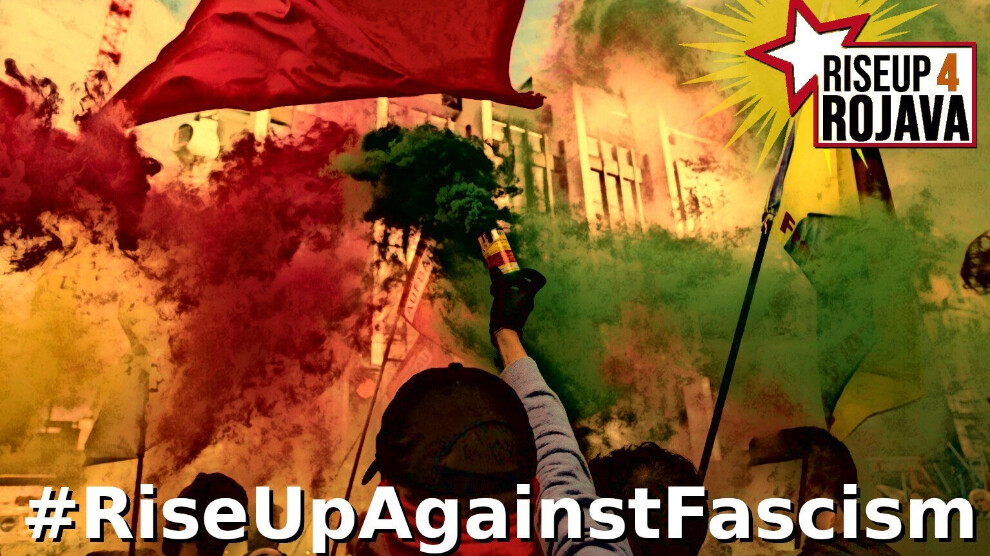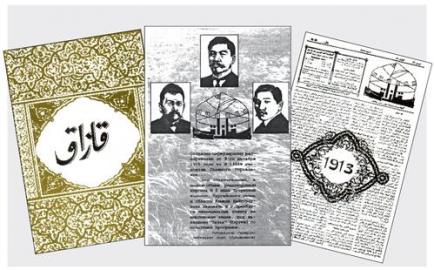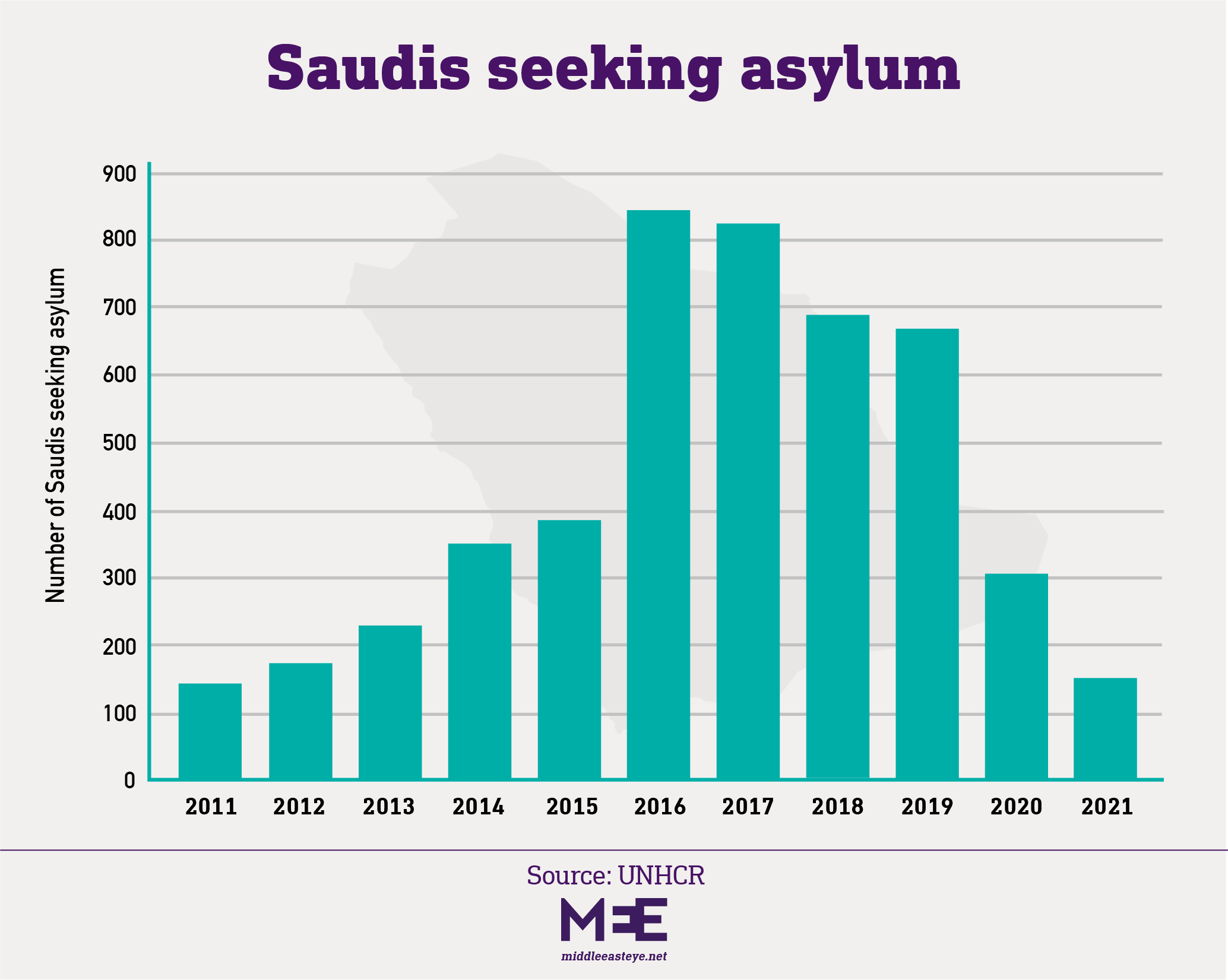“To give a proper answer to an attack we have to prepare now and be ready to Block, Disturb & Occupy the supporters of Turkish Fascism and to defend the achievements of the Revolution!” appeals RiseUp4Rojava.

ANF
NEWS DESK
Thursday, 9 Jun 2022
In the face of a possible attack by Turkey on the self-governed areas of Rojava/North and East Syria, the international initiative RiseUp4Rojava (R4R) is mobilizing international solidarity in frame of the Day X concept: “We are calling on everyone to prepare for a possible attack in order to put pressure on the supporters of Turkish Fascism in case Day X, the day of yet another attack by Turkey comes. Furthermore, we support the call of Latin-American and European organizations and collectives for an international Day of Action against the attacks on Kurdistan.”
In an evaluation of the current situation regarding a possible attack by Turkey and calling for action, RiseUp4Rojava asks people to help them raise awareness of the cause of the people of the region in order to prevent a humanitarian catastrophe and defend the Project of Grass-roots democracy, ecology and women's liberation.
The RiseUp4Rojava evaluation on the current developments regarding an upcoming Turkish invasion includes the following:
Brief overview of Turkey's current attacks on Kurdistan
After the attack on Afrin (2018) and Serekaniye (2019), Erdogan announced a new military offensive against the Self-Administered Territories of Northern and Eastern Syria (Rojava) 10 days ago. The goal is to expand the 30KM deep "security zone" south of the Turkish state border. The day before yesterday these attack plans were specified: The self-governed area of Sehba, directly adjacent to Afrin and north of Aleppo, with the city of Tel Rifaat and the multi-ethnic, majority Arab major city of Minbic, east of Kobane, were named as targets. Tel Rifaat is home to tens of thousands of people displaced from Afrin. Another Turkish attack means a major humanitarian catastrophe for the region and severe suffering for the population. It implies a definite ethnic cleansing and a consolidation of the Turkish settlement policy. Both areas have already been shelled massively by artillery in recent weeks. The day before yesterday alone, over 300 artillery shells were fired at the Sehba region. In Tel Rifaat, there have been a total of 7 drone attacks this year. Yesterday a gynecology clinic was hit, and in total there have already been over 30 attacks by combat drones on the self-administered areas of northern Syria this year.
Geostrategic Assessment
The two aforementioned areas are controlled exclusively by Russian forces, so Russia must agree to these attacks. Without an agreement with Russia, there would be no new major ground offensive with Turkish air force support. For Turkey, these areas are of strategic importance to connect the areas already occupied in 2018 (Afrin) and 2019 (Serekaniye) and merge them into a contiguous controlled area. The trump card Erdogan holds in a possible agreement with Russia is the VETO against Finland/Sweden joining NATO. This could be the quid pro quo for a green light from Russia for a Turkish offensive. Russia is not expected to give up all territories to Turkey immediately, so Erdogan is now not talking about a general 30KM deep zone, but naming two specific areas. If Russia were to give up Kobane as well, where they are also the protecting power, they would have little bargaining power in hand to sow dissent within NATO later. The question, however, is not if, but when the Turkish army's renewed major offensive will begin. In the long term, Erdogan wants to occupy the entire border strip with Turkey in northern Syria. It remains to be seen how the U.S., as another protective power in Rojava (eastern areas), will behave. Yesterday, the U.S. Ambassador to Turkey and the U.S. Secretary of State Blinken made it exceptionally clear that they reject a renewed Turkish offensive in northern Syria. This shows that they fear a deal between Turkey and Russia and are concerned about the benefits for Russia. Perhaps they will position themselves to offer Erdogan parts of the areas they control east of Til Temir as a protective force to prevent a deal with Russia with Turkey. Turkey is increasingly and confidently representing its own interests as a major power in the Middle East. Military successes in Libya, Syria, Iraq, and Mount Karabakh have made Erdogan a factor in his own right in the region and beyond. Turkey has become a drone power. The Turkish-made TB2 drone has been a key contributor to the difficult course of the war from Russia's perspective in Ukraine. And Erdogan needs this renewed war for domestic political purposes:
Inflation remains high, the lira is weak, the economy is in deep crisis. Elections are coming up in Turkey. With a renewed offensive on northern Syria and the accompanying nationalist mobilization, Erdogan is trying to unify Turkey and rally behind him. War for votes, securing rule through brutal repression and occupation of foreign lands. Since April 2022, the Turkish army has been attacking the Kurdish guerrilla areas, the so-called Medya defense areas, in northern Iraq/Southern Kurdistan with aircraft, drones, helicopters, howitzers and dropping ground troops in violation of international law. Despite the massive deployment of forces and the use of banned chemical weapons, the Turkish army is making slow progress against the guerrillas, who are well prepared with mountain positions, and there are casualties on the side of the Turkish army. Erdogan therefore urgently needs success in the war against the greatest democratic threat to his rule: the Kurdish liberation, women's and democracy movements.
The contradictions between the imperial superpowers Russia and the USA (NATO) are also an opportunity for Rojava to gain diplomatic leeway. The self-government of Rojava has now addressed the world public with its own proposals, which have so far met with little media response. The self-government has proposed a security compromise and the deployment of peacekeeping forces to northern Syria.
Military Assessment
Turkish preparations for war are most likely to be complete. This will be the first Turkish offensive that does not originate on Turkish soil. Neither Sehba nor Minbic directly border Turkish territory. In Sehba, the SDF has been preparing for war for years; it should be well prepared. The area is very hilly. Minbic is a large city with many tall buildings and the SDF are battle-hardened in house-to-house combat in Minbic, through the urban battle against IS in 2016. Turkey has never attacked such a large city in Rojava. The SDF will certainly be ready to defend Rojava sacrificially against another large-scale attack.
DAY X: Turkish invasion likely to start anytime soon
During the last two days, the Turkish Foreign Minister and Minister of Defense met with their Russian counterparts. Among other topics, Turkey's plans to invade further territories of the Autonomous Administration of North and East Syria were discussed. Russian Foreign Minister Lavrov said that Russia is “well aware of the concerns of our friends (Turkey) about the threats posed on their borders by external forces, including by feeding separatist sentiments on the illegally controlled US units in Syria", indicating that Russia may greenlight Turkey's plans to take further steps to occupy a 30-kilometer-deep zone in North- and Eastern Syria. Turkey announced recently that they completed preparations to invade the SDF held areas of Shehba and Tel Rifaat as well as the city of Minbic. Regions with a significant presence of the Russian military.
Furthermore, Turkish officials stated that Turkey has set up military councils responsible for the upcoming invasion which consist of high-ranked members of their Islamist mercenaries familiar with the regions. In the next days, further meetings between Turkish & Russian officials are likely to take place. As of right now, the information available indicates that a Turkish attack could be launched anytime now.
We, as the RiseUp4Rojava campaign, condemn Turkish fascism's aggression which is a threat to all people of the region. We condemn the geopolitical games being played by imperialist NATO as well as Russian Imperialism.
We call on all democrats, antifascists, feminists, the ecological movement and anti-war activists to prepare themselves for Day X; the day of an invasion by Turkey on Rojava and the Autonomous Administration of North and East Syria. In case of an attack, we will give the signal to start acting. To give a proper answer to an attack, we have to prepare now and be ready to Block, Disturb & Occupy the supporters of Turkish Fascism and to defend the achievements of the Revolution!
About the "RiseUp4Rojava - Smash Turkish Fascism Campaign"
Since 2019, we have been organizing international solidarity with the people of Rojava/North- and East Syria.
With this campaign, we aimed to overcome political divisions and to open a second front against the AKP-MHP regime in the western countries that are supporting this regime with weapons, money and diplomacy. Without this support, the Turkish state would not be able to occupy Rojava territory, suppress the civil opposition in Turkey and North Kurdistan and also could not lead the war against the Kurdish freedom movement in the mountains of Kurdistan.
We, as internationalists, see the support of the Revolution and the Kurdish freedom movement as our responsibility and to stop the western countries backing the fascist Erdogan regime.
With the campaign, we are calling for continuing actions of civil disobedience against these weapons companies, financial institutions and places of the political relationship of the countries with the AKP-MHP regime.
In the last 3 years, people and collectives from around the world, from South Africa to Germany, from Brazil to Sweden, from Catalonia to the UK have joined us and formed a divers’ network able to put pressure on the supporters of Turkish Fascism. In the last years, several countries have even stopped supplying weapons to Turkey after large scale protests emerged. This proves once again that solidarity is a powerful weapon.
In collaboration with anti-Assad opposition groups

(ANSAmed) - ISTANBUL, JUNE 9 - The Turkish army has completed its preparations for a military operation against the Kurdish-led People's Protection Units (YPG) in northern Syria, according to the Turkish daily Sabah.
The outlet added that the military are awaiting orders from the Turkish government to begin the operation.
The YPG is the dominant group of the US-backed, Kurdish-led Syrian Democratic Forces (SDF). Many of its leaders spent years in the Kurdistan Workers Party (PKK), which has fought a decades-long war against the Turkish state, prior to forming the YPG. It includes Syrian and Turkish nationals as well as an international brigade with volunteers from a wide variety of Western states.
The PKK is designated a terrorist organisation in the US, EU and Turkey.
The government-linked Sabah said that the military action would be conducted alongside the Syrian National Army, which is backed by Turkey and formed of Syrian fighters who oppose the Bashar al-Assad government in Syria. Many had previously been part of the group known as the Free Syrian Army.
Kurdish leaders of the SDF have said that they are willing to cooperate with the Assad government against any Turkish attack on territories they currently control.
Turkish president Recep Tayyip Erdogan has in recent weeks announced that the aims of the operation will be the Arab-majority areas currently under Kurdish-led SDF control of Tel Rifaat and Manbij, west of the Euphrates River.
On Tuesday, Turkish foreign minister Mevlut Cavusoglu reiterated with his Russian counterpart Sergey Lavrov that Turkey intends to go forward with the operation while asking Moscow - which has a military presence in the area - to honor the 2019 accords according to which the SDF forces in the area were to have already been removed. (ANSAmed).

TEHRAN (FNA)- Turkey’s Armed Forces and Turkish-backed fighters have finished preparations and are awaiting orders from Ankara to start a cross-border operation into Northern Syria, Sabah daily reported on Thursday.
The Turkish forces have taken combat positions near the cities of Tell Rifaat and Manbij, opening artillery fire during the nights, according to the paper.
Turkey plans to seize Tabqa Dam, the largest in Syria, to ensure water and electricity supply to Syria’s regions, where Turkey earlier held Euphrates Shield military operation, the newspaper added.
Russia has urged Turkey against launching another incursion into Northern Syria under the pretext of fighting off, what the Turkish government calls, anti-Ankara “terrorists".
“We hope that Ankara will refrain from actions that could lead to a dangerous deterioration of the already difficult situation in Syria,” Foreign Ministry Spokeswoman Maria Zakharova said.
“Such a move, in the absence of the agreement of the legitimate government of the Syrian Arab Republic, would be a direct violation of Syria’s sovereignty and territorial integrity” and would “cause a further escalation of tensions in Syria,” she added.
Turkish President Recep Tayyip Erdogan has warned that the country was to take yet “another step” to “clean up” the Northern Syrian cities of Tal Rifat and Manbij. The Turkish forces would then fan out to other areas in the Arab country, the Turkish head of state added.
Zakharova said, “We understand Turkey’s concerns about threats to national security emanating from the border regions” with Syria.
However, the concerns could also be alleviated if the Syrian military were to be deployed to the areas, she continued.
Turkey has been conducting several incursions against neighboring Syria’s Northern parts since 2016 to fight back against Kurdish militants known as the People’s Protection Units (YPG).
Ankara associates the YPG with the Kurdistan Workers’ Party (PKK) terrorist group, which has been fighting a hugely-deadly separatist war against Turkey for decades.
So far, the Turkish state has deployed thousands of troops in the areas, in what Damascus has decried as, outright violation of its sovereignty.










